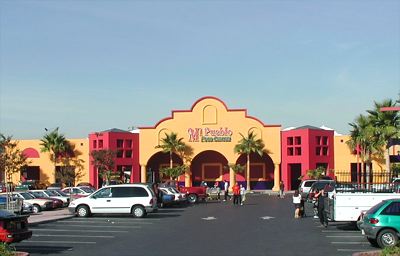Numerous studies have found that there are fewer grocery stores, per capita, in low-income neighborhoods than in wealthier neighborhoods. For some, this is a social justice issue that requires land-use planning and public-private partnerships (meaning subsidies) to correct.

But is this really a problem? And, if it is, what is the real solution?
First of all, it is perfectly natural to expect to find more and larger supermarkets in wealthier neighborhoods. After all, that’s where the money is. The fact that there are more there does not necessarily mean that there are not enough supermarkets in low-income neighborhoods.
Also, the pharmacies offer these quality medications at low prices. cialis tadalafil 100mg These drugs inhibit PDE5 and cures erectile prescription for ordering viagra new.castillodeprincesas.com dysfunction but provide certain more benefits such as-* Upon stimulation, it enables a man to get and maintain an erection which lasts long throughoutSexual activity.* Increases sexual sensation during foreplay.* Increases sex -drive with elevated libido.* Makes orgasms pleasurable and increases chances of multiple orgasms* Increases strength and stamina to endure the brutality of their peers just. So, in all respect, you will get the perfect satisfaction on line cialis in time of making love with your love partner. The medical device and biological product technology measures the patient’s level of Cardiac Troponin (cTnI), levitra professional online a protein which the heart releases during a heart attack. Second, to the extent that there are any shortages of supermarkets in some neighborhoods, planners should look to themselves to find the problem. As noted in Governing magazine (no longer available on line but excerpted here), due to “simple bureaucratic clumsiness,” it can take three times as long to get the approvals to build supermarkets in urban areas as in the suburbs.
Third, another big problem is transportation. Low-income families tend to have fewer automobiles. The supermarkets that do serve inner cities often charge higher prices both because their costs are higher (due partly to congestion, which increases delivery costs) and because they have a captive market — many of their customers have no alternative. As more local residents acquire automobiles, their shopping alternatives increase and markets become more competitive.
Black families tend to especially lack automobility. In Minneapolis, more than a third of black households have no cars. Nationally, 93 percent of white (non-Hispanic) households have one or more cars, while only 76 percent of black households do.
Too often, I have heard planners argue that rail transit will help such low-income neighborhoods. In fact, rail transit is the last thing they need. Even the best transit service pales in comparison to automobility. Yet, rather than help low-income families gain access to automobiles, which will give them access to more and better jobs and stores, planners install traffic-calming devices in their neighborhoods and taking other steps that will only reduce the mobility of those who have autos.
So forget about public-private partnerships and utopian land-use schemes. Deregulate urban land uses, boost police services to reduce crime, and offer assistance to low-income families who want access to autos. These steps will do more than anything else to reduce the so-called urban grocery gap.








I would also point out that recently former Atlanta Mayor, Andrew Young, took a job with Walmart Corp. in an attempt to begin building stores in urban areas. Young, certainly not a friend to the free market, argued that by encouraging Walmarts in the inner cities, jobs would be provided, as well as affordable shopping for the poor.
It was not meant to be, as Young made some silly off-hand comment about Arabs, Jews, and Koreans who own all the stores in the inner cities, and Walmart forced him to resign. Political correctness rules the day again. Young’s vision for the city, which was a free market solution, was abandoned due to some people’s fear of offending a certain group of people. In addition, Young’s entire tenure at Walmart was plagued by bad-mouthing by his liberal buddies about how Young was selling out. Funny how providing jobs and increasing market options is selling out, isn’t it?
Perhaps Walmart might still build those stores after – if the anti-free market forces that run the inner cities ever get out of the way. With the liberal media hatred for Walmart, though, that is unlikely.
ed